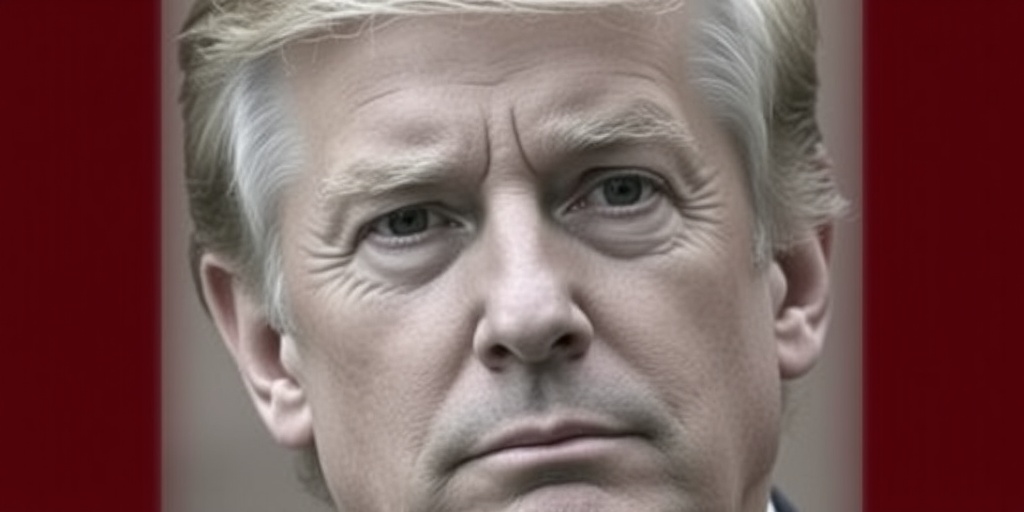Now Reading: Trump Launches New Crackdown on China
-
01
Trump Launches New Crackdown on China
Trump Launches New Crackdown on China

Title: Trump Administration Considers Aggressive Economic Restrictions on China
The Trump administration is intensifying its economic pressure on China, signaling a possible decoupling between the U.S. and its significant trading partner. Historically, President Trump’s rhetoric concerning China has revolved around the traditional tool of tariffs. However, a closer analysis of recent actions suggests a broader strategy that may include further restrictions on investments and trade.
Since taking office, President Trump has made significant moves that extend beyond just tariffs. Recently, his administration has proposed a greater expansion of restrictions on investments flowing between the United States and China. A clear indication of this shift is the appointment of officials who, due to national security concerns, are expected to advocate for more stringent limits on Chinese investments and technology transfers. This effort aligns with Trump’s recent implementation of a 10 percent tariff on Chinese imports, stating it as an “opening salvo” in a larger strategy aimed at shielding American economic interests.
The context surrounding these decisions is essential. Over the years, both Republican and Democratic administrations had been cautiously redefining the U.S.-China economic relationship. Trump’s latest maneuverings, however, indicate a readiness to sever ties with China more aggressively. Experts like Samm Sacks, a senior fellow at the Paul Tsai China Center at Yale Law School, have noted that the investment memorandum issued by the Trump administration resembles an urgent call to completely unwind current commercial ties with China.
While some analysts argue that the administration’s pronouncements could serve as bargaining tools in negotiations with Chinese President Xi Jinping, the underlying sentiment remains one of cautious escalation. Sacks commented that should negotiations falter—as is often the case—the outlined strategies could act as a guideline for completing the separation.
President Trump appears to have dual interests at play. On one hand, he hopes to leverage the pressure on China to elicit concessions, while on the other, he may be seeking to maintain certain economic ties. Advisors have indicated that Trump holds a more transactional perspective toward issues such as Chinese investment than some of his more hawkish staff members. These negotiations may also factor into broader issues that include China’s unfulfilled commitments from a trade agreement established in early 2020.
Looking back on his first term, Trump accepted foreign investments that many Republicans considered detrimental to national security. For instance, he showed support for Japan’s Nippon Steel investing in U.S. Steel and took steps to delay a ban on the popular app TikTok. He also expressed openness to Chinese companies building auto plants in the U.S. provided they hired local workers, stating, “I’ll tell them if they want to build a plant in Michigan, in Ohio, in South Carolina, they can — using American workers, they can.”
Amid these developments, the Trump administration seems poised to tighten U.S. export controls further. This would likely involve reinforcing existing regulations concerning chip technology and addressing possible loopholes. In recent actions, significant personnel changes within the Commerce Department signal a firmer line against technology transactions with China. For instance, the dismissal of veteran officials in favor of new appointments who advocate for stricter controls underscores this shift.
Although the presidential memorandum on investment is not legally binding, it provides guidance for establishing new rules aimed at preventing investments that could aid Chinese military advancements. The memo indicates a desire to stem the tide of Chinese investments that are perceived as threats to U.S. national security while encouraging “passive” investments from allied nations.
The memo also proposes expanding the authorities of the Committee on Foreign Investment in the United States (CFIUS) to include newly built facilities. It suggests ceasing the use of “mitigation” agreements, which allowed companies to make modifications to ease national security concerns, thereby facilitating some acquisitions.
Despite these intentions, experts warn that such regulations could face legal challenges. Some analysts, like Ling Chen from Johns Hopkins University, argue that Chinese investment in the U.S. has already declined sharply since 2017, predicting that Trump’s new measures may not significantly influence the overall investment landscape.
Additionally, critics suggest that many proposals violate existing CFIUS authorities and could result in litigation. Jim Secreto, a former Treasury Department advisor, has cautioned that the administration must navigate this path carefully to avoid potentially undermining national security efforts.
In conclusion, the Trump administration’s approach towards China is shifting towards a more aggressive stance on economic restrictions and investment controls. As negotiations and trade tensions continue to evolve, the consequences for U.S.-China relations remain to be seen, as both nations grapple with the implications of a rapidly changing economic landscape.
Stay Informed With the Latest & Most Important News
Previous Post
Next Post
-
 01New technology breakthrough has everyone talking right now
01New technology breakthrough has everyone talking right now -
 02Unbelievable life hack everyone needs to try today
02Unbelievable life hack everyone needs to try today -
 03Fascinating discovery found buried deep beneath the ocean
03Fascinating discovery found buried deep beneath the ocean -
 04Man invents genius device that solves everyday problems
04Man invents genius device that solves everyday problems -
 05Shocking discovery that changes what we know forever
05Shocking discovery that changes what we know forever -
 06Internet goes wild over celebrity’s unexpected fashion choice
06Internet goes wild over celebrity’s unexpected fashion choice -
 07Rare animal sighting stuns scientists and wildlife lovers
07Rare animal sighting stuns scientists and wildlife lovers





















